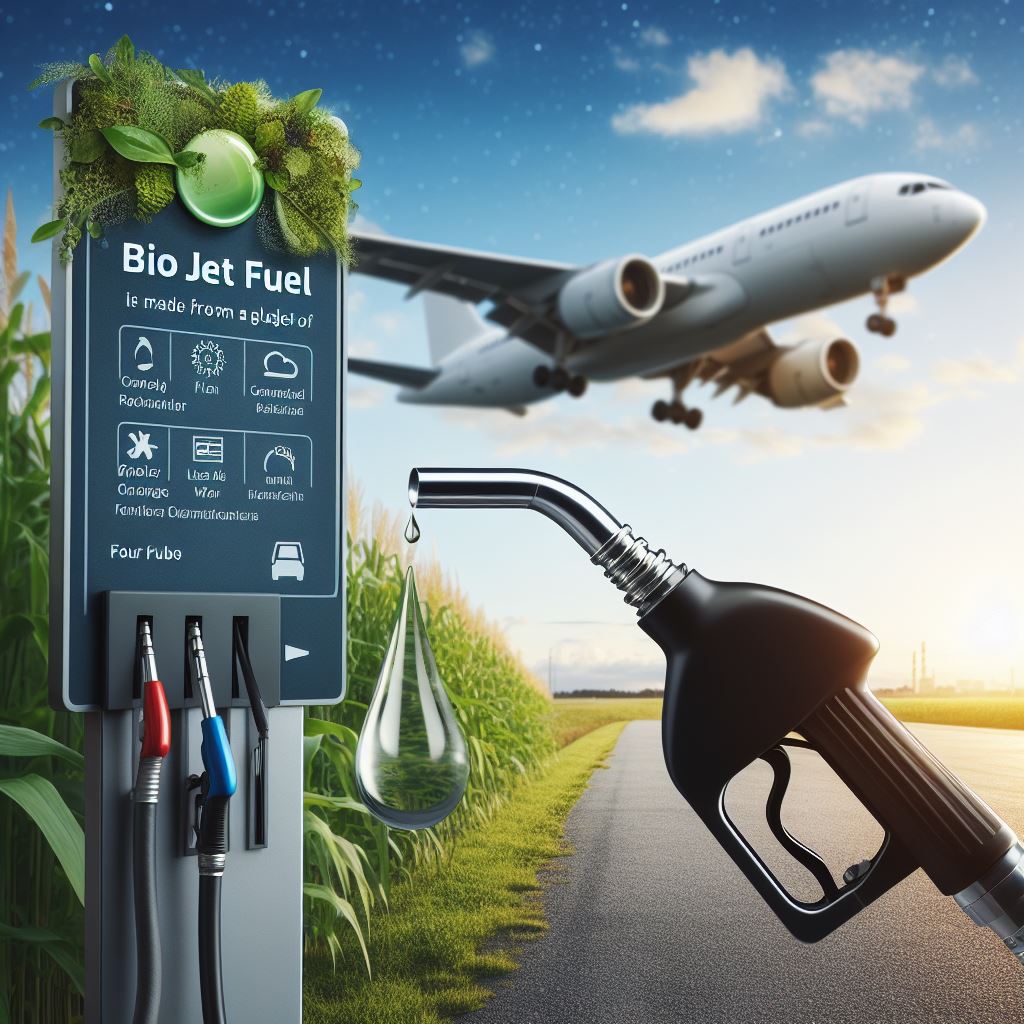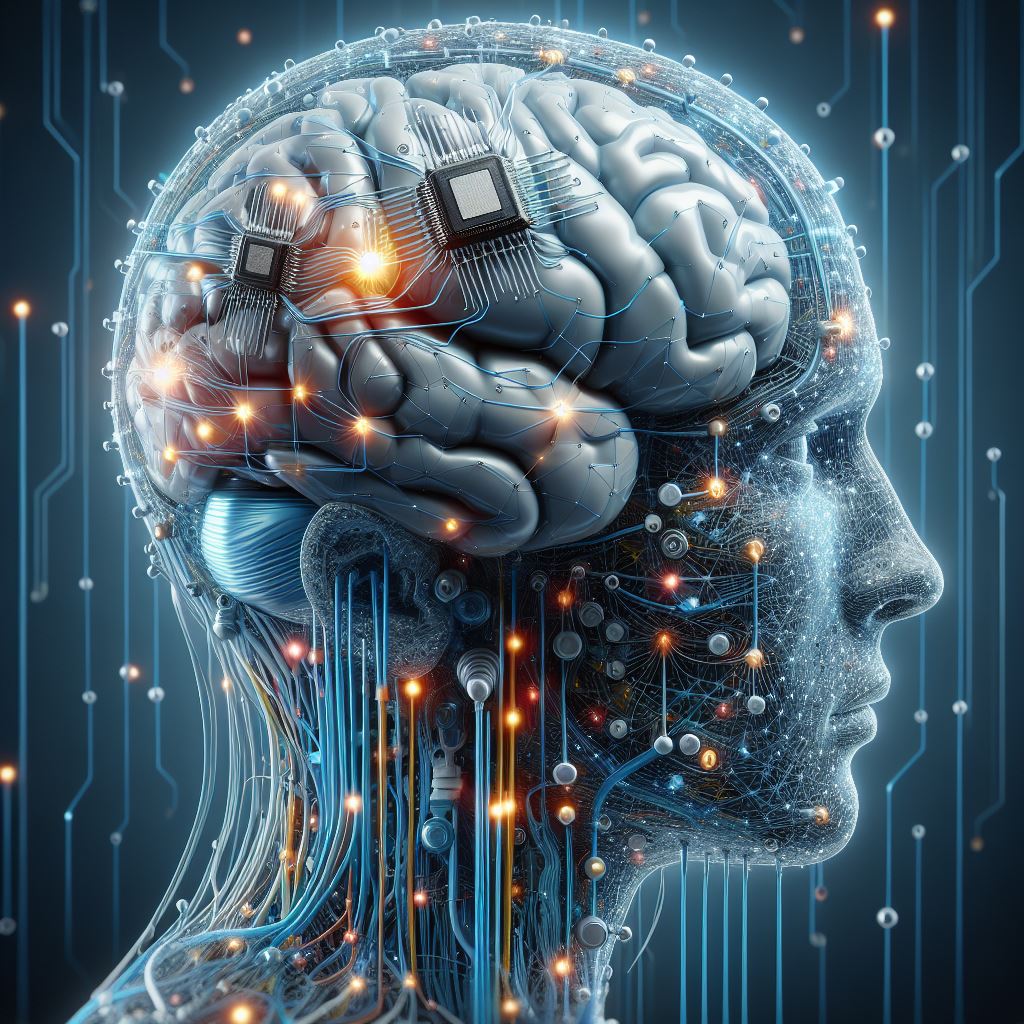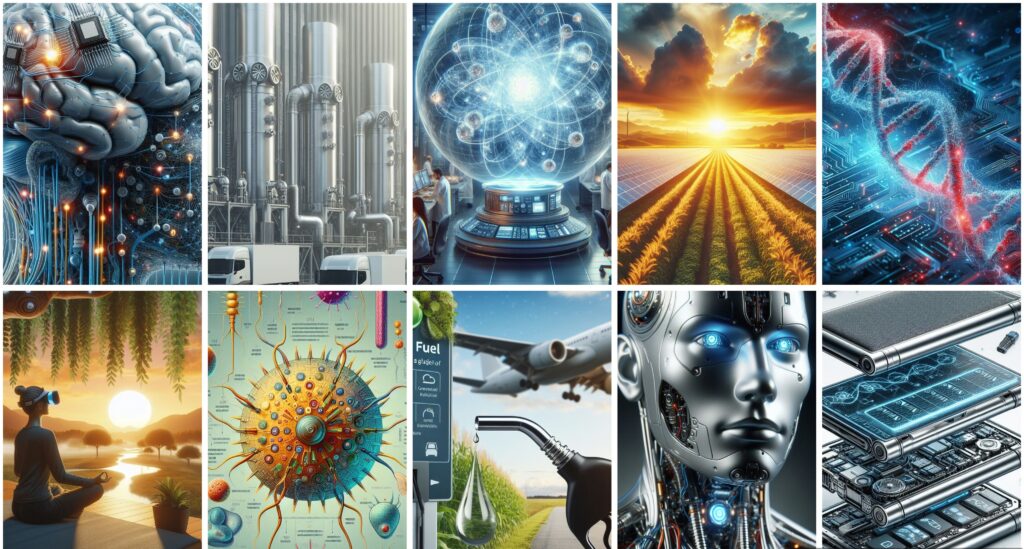Unveiling Tomorrow: Exploring 10 Emerging Technologies Shaping Our Future
Introduction
The world is changing quickly, and technology is playing a major role in that change. New technologies are emerging all the time, and they are having a profound impact on the way we live, work, and interact with the world around us.
One of the most significant emerging technologies is artificial intelligence (AI). AI is already being used in a variety of ways, from powering self-driving cars to helping doctors diagnose diseases. In the future, AI is likely to become even more sophisticated, and it could have a major impact on many different industries. For example, AI could be used to automate tasks that are currently performed by humans, which could lead to job losses. However, AI could also create new jobs, and it could help businesses to operate more efficiently.
Another emerging technology that is having a major impact is the Internet of Things (IoT). The IoT is a term for the network of physical devices that are connected to the internet and can collect and exchange data. IoT devices are already being used in a variety of ways, from tracking our fitness to monitoring our homes. In the future, IoT is likely to become even more widespread, and it could have a major impact on our lives. For example, IoT could be used to make our homes more energy efficient, or it could be used to provide us with real-time information about our health.
These are just a few examples of the emerging technologies that are changing the world. As these technologies continue to evolve, they will likely have an even greater impact on our lives. It is important to be aware of these technologies and to consider the potential impact they could have on our society.
In addition to the ethical and societal considerations that emerging technologies raise, several practical challenges need to be addressed. For example, emerging technologies often require a significant amount of data to train and operate effectively. This can be a challenge, especially for developing countries that may not have access to the same level of data as developed countries. Additionally, emerging technologies can be complex and difficult to understand. This can make it difficult for regulators to develop appropriate policies and for businesses to adopt these technologies effectively.
Despite the challenges, emerging technologies offer a great deal of potential for improving our lives. By understanding the potential impact of these technologies and addressing the challenges that they raise, we can ensure that they are used for good and that they help to create a better future for all.
1. Flexible Batteries: Unleashing the Power of Bendable Devices
Picture a world where your smartphone wraps around your wrist, where your clothing charges your gadgets, and where medical implants are sustained by batteries seamlessly integrated into your body. Welcome to the realm of flexible batteries, a revolutionary technology that is set to transform wearable tech, healthcare, and even fashion.

Revolutionizing Wearable Tech
The advent of flexible batteries has opened a new era for wearable technology. Imagine a smartwatch that molds to the contours of the wrist, providing an unobtrusive and comfortable user experience. This section explores the potential applications and implications of flexible batteries in the realm of wearables.
Powering the Future of Healthcare
Flexible batteries offer a promising solution for medical devices and implants. From pacemakers to neural implants, the integration of pliable power sources could enhance patient comfort and streamline healthcare delivery. We delve into the potential of flexible batteries to revolutionize the healthcare industry.
Fashion Meets Function
Beyond electronics, flexible batteries could redefine fashion. Clothing that not only serves as a form of self-expression but also powers your devices is no longer a distant concept. This section explores the intersection of fashion and technology, painting a vivid picture of a future where our attire is not only stylish but also functional.
2. Generative Artificial Intelligence: Redefining Creativity and Ownership
Generative AI is challenging the traditional boundaries between human and machine creativity, enabling machines to produce photorealistic images and persuasive articles. While this technology democratizes content creation, it also raises important questions about ownership and authenticity.

The Democratization of Content Creation
Generative AI has the potential to democratize content creation, enabling individuals and businesses alike to generate high-quality, creative content. This section delves into how this shift in content creation dynamics could empower a new wave of artists, writers, and creators.
Ownership and Authenticity Challenges
However, the rise of generative AI brings forth challenges related to ownership and authenticity. Who owns the content created by a machine? Can AI-generated content be truly authentic? This segment explores the legal, ethical, and philosophical implications of generative AI in the context of ownership and authenticity.
3. Sustainable Aviation Fuel: Navigating Greener Skies
With climate change at the forefront of global concerns, sustainable aviation fuel (SAF) emerges as a beacon of hope for a greener aviation industry. Derived from renewable sources, SAF has the potential to significantly reduce carbon emissions and pave the way for cleaner skies.

Addressing Climate Concerns
The aviation industry is a significant contributor to greenhouse gas emissions. Sustainable aviation fuel presents a viable alternative, offering a way to mitigate the environmental impact of air travel. This section explores how SAF addresses climate concerns and its potential to revolutionize air travel.
Challenges and Opportunities
While SAF holds immense promise, it faces challenges in terms of scalability, production costs, and infrastructure. This segment delves into the obstacles that must be overcome and the opportunities that lie ahead for sustainable aviation fuel to become a mainstream, eco-friendly alternative.
4. Designer Phages: A Precision Strike Against Antibiotic Resistance
The rise of antibiotic-resistant bacteria is a looming global health crisis. Designer phages, genetically engineered viruses capable of targeting and eliminating harmful bacteria, offer a potential solution to this urgent medical challenge.

Antibiotic Resistance: A Global Threat
Antibiotic-resistant bacteria pose a significant threat to public health, rendering traditional antibiotics ineffective. This section explores the gravity of the situation and the potential consequences of inaction.
Designer Phages: Precision Medicine at the Microbial Level
Designer phages represent a groundbreaking approach to combatting antibiotic resistance. By specifically targeting harmful bacteria, they offer a level of precision not achievable with traditional antibiotics. This segment delves into the science behind designer phages and their potential to revolutionize medicine.
Read about Solar fence lights and how you can decorate your premises.
5. Metaverse for Mental Health: Virtual Realities as Therapeutic Spaces
Virtual reality and augmented reality are extending their reach into the realm of mental health. The metaverse holds promise for creating immersive therapies for anxiety, depression, and other mental health conditions, providing a safe and controlled environment for patients.

The Mental Health Crisis
Mental health disorders are on the rise globally, and traditional therapeutic approaches have limitations. This section explores the current state of mental health and the need for innovative solutions.
The Therapeutic Potential of the Metaverse
The metaverse offers a new frontier for mental health treatments. From exposure therapy for phobias to mindfulness experiences for stress reduction, virtual reality can provide tailored therapeutic interventions. This segment explores the potential applications and benefits of the metaverse in mental healthcare.
Ethical Considerations in Virtual Therapy
While the metaverse opens up exciting possibilities, it also raises ethical considerations. Issues such as patient privacy, the blurring of virtual and real-world boundaries, and the potential for misuse must be addressed. This section examines the ethical landscape of using virtual realities for mental health treatment.
6. Programmable DNA: Rewriting the Code of Life
The power to rewrite the genetic code of living organisms opens doors to creating new materials, curing diseases, and even modifying human characteristics. Programmable DNA has the potential to revolutionize medicine, agriculture, and our fundamental understanding of life itself.

The Promise of Genetic Engineering
Programmable DNA represents a paradigm shift in genetic engineering. This section explores the promise of modifying DNA to create new materials, cure diseases, and potentially enhance human capabilities.
Ethical Implications of Genetic Modification
However, with great power comes great responsibility. The ability to manipulate DNA raises profound ethical questions. This segment delves into the ethical considerations surrounding programmable DNA, including concerns about unintended consequences, equitable access, and the potential for designer babies.
7. Fusion Energy: Tapping into the Power of the Sun
Harnessing the energy that fuels the sun, fusion energy stands as a beacon of hope for a virtually limitless and clean power source. While still in its early stages of development, the success of fusion energy could potentially solve the global energy crisis and usher in a new era of sustainable power.

The Quest for Clean Energy
The world is facing an ever-growing energy demand, and current sources are not sustainable in the long run. Fusion energy promises a revolutionary solution to this dilemma. This section explores the potential of fusion energy to meet global energy needs while minimizing environmental impact.
The Challenges of Fusion Energy
While the potential benefits of fusion energy are immense, the path to achieving controlled fusion reactions is fraught with scientific and engineering challenges. This segment examines the hurdles that scientists and engineers must overcome to make fusion energy a reality.
8. Quantum Computing: Computing Beyond the Classical Limits
As traditional computers approach their limits, quantum computing emerges as a paradigm-shifting technology. Harnessing the power of quantum mechanics, quantum computers can solve problems deemed impossible for classical counterparts.

The Limitations of Classical Computing
Classical computers, despite their incredible advancements, face limitations in solving certain complex problems. This section provides an overview of the challenges that classical computing faces and the need for a new computational paradigm.
Quantum Computing: A Leap Forward
Quantum computing leverages the principles of quantum mechanics to perform computations at speeds and scales inconceivable for classical computers. This segment explores the fundamental concepts behind quantum computing and its potential applications in various fields.
Quantum Supremacy and Beyond
Recent breakthroughs in quantum computing, such as achieving quantum supremacy, mark significant milestones in the field. However, challenges remain in terms of stability, error correction, and practical applications. This section discusses the current state of quantum computing and the road ahead.
9. Direct Air Capture: Clearing the Skies of Carbon
As climate change intensifies, the need to remove carbon dioxide from the atmosphere becomes increasingly crucial. Direct air capture technologies offer a promising solution, capturing CO2 directly from the air and storing it safely, mitigating the impact of greenhouse gas emissions.

The Urgency of Carbon Removal
Carbon dioxide levels in the atmosphere are reaching critical levels, contributing to global warming and climate change. This section explores the urgency of carbon removal and the role direct air capture technologies can play in this endeavor.
Direct Air Capture Technologies: How They Work
Direct air capture involves advanced technologies designed to capture CO2 from the atmosphere. This segment provides an in-depth look at the various methods and technologies employed in direct air capture, including chemical processes and innovative engineering solutions.
Challenges and Opportunities in Carbon Capture
While direct air capture shows promise, it faces challenges in terms of scalability, cost-effectiveness, and energy requirements. This section examines the obstacles that must be addressed and the potential opportunities for carbon capture technologies to make a meaningful impact.
10. Brain-Computer Interfaces: From Science Fiction to Reality
Controlling machines with our minds has been a staple of science fiction for many years, but brain-computer interfaces are making this a reality. These devices have the potential to revolutionize the lives of people with disabilities, enhance human-computer interaction, and raise profound philosophical questions about consciousness and free will.

The Intersection of Mind and Machine
Brain-computer interfaces represent a convergence of neuroscience and technology, allowing direct communication between the brain and external devices. This section explores the current state of brain-computer interface technology and its potential applications.
Empowering Individuals with Disabilities
One of the most promising aspects of brain-computer interfaces is their ability to empower individuals with disabilities. From prosthetics to communication devices, these interfaces offer a new frontier in assistive technology. This segment discusses the transformative impact on the lives of those with disabilities.
Ethical and Philosophical Considerations
However, as we unlock the ability to interface directly with the human brain, profound ethical and philosophical questions arise. This section delves into the ethical considerations surrounding brain-computer interfaces, including issues of privacy, consent, and the potential for cognitive enhancement.
Conclusion: Navigating the Future Responsibly
The future is shaped by the incredible potential of these 10 emerging technologies. These innovations have vast benefits, but it’s important to consider the ethical and societal implications. Responsible and equitable use of these technologies is essential to ensuring a bright future for everyone.
As we venture into this new territory, we need to be cautious and aware of the far-reaching effects these technologies could have on our world and future generations. We must stay true to our values and make sure that innovation benefits humanity, not the other way around.


